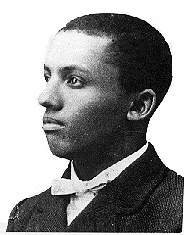Carter G. Woodson was born to poor, yet land-owning, former slaves in New Canton, Virginia on December 19, 1875. During the 1890s, he hired himself out as a farm and manual laborer, drove a garbage truck, worked in coalmines, and attended high school and college in Berea College, Kentucky—from which he earned a B.L. degree in 1903. In the early 1900s, he taught black youth in West Virginia. From late 1903 until early 1907, Woodson worked in the Philippines under the auspices of the US War Department. Woodson then traveled to Africa, Asia, and Europe and briefly attended the Sorbonne in Paris, France. In 1908, he received an M.A. degree in History, Romance languages, and Literature from the University of Chicago in Illinois. In 1912, while teaching in Washington, D.C., he earned his doctorate in history from Harvard University.
In 1915, Woodson published his first book, The Education of the Negro Prior to 1861 and co-founded the Association for the Study of Negro Life and History (ASNLH). In 1916, he singlehandedly launched The Journal of Negro History, now The Journal of African American History. In 1918, Woodson published A Century of Negro Migration and became the principal of Armstrong Manual Training School, Washington, D.C. From 1919 until 1920, he was the Dean of Howard University’s School of Liberal Arts and from 1920 until 1922 he served as a dean at West Virginia Collegiate Institute. In 1921, he published The History of the Negro Church and founded the Associated Publishers, Inc. After founding the ASNLH, he also became active in black organizations like the NAACP, the National Urban League, the Friends of Negro Freedom, and the Committee of 200.
In 1922, he published the first edition of his popular The Negro in Our History and decided to commit his life’s work, routinely laboring 18 hours per day, to the ASNLH and the early black history movement. On July 18, 1922, he purchased a three-story, late-nineteenth century Italianate style row house in Washington D.C. located at 1538 Ninth Street, NW that became his personal residence as well as the office for the Associated Publishers, Inc. and the national headquarters of the ASNLH. During the 1920s, Woodson received tens of thousands dollars from several white philanthropists to fund the ASNLH’s various activities. In 1926, he launched Negro History Week. By the early 1930s, Woodson relied upon black communities throughout the country to maintain his organization’s activities.
In 1937, he created The Negro History Bulletin mainly for children and schoolteachers and throughout the 1930s and 1940s Woodson spoke at countless elementary and high schools, Negro History Week events, and at the graduation ceremonies for many HBCUs. Once in Detroit, Michigan in February 1935, he addressed “more than three thousand persons.”

During the 1930s and 1940s, Woodson wrote several hundred essays in leading black newspapers such as the New York Age, the Pittsburgh Courier from Pennsylvania, the Afro-American from Baltimore, Maryland, and the Chicago Defender. In 1933, he published The Mis-Education of the Negro. Though he wrote, co-authored, and/or edited more than twenty books, this is his most famous and enduring book. Woodson died suddenly from a heart attack in his “office home” on April 3, 1950. He never married and had no children. Deservingly dubbed “The Father of Black History,” he was, simply put, a black history institution builder.






Pingback: Historian Carter G. Woodson – The Militant Negro™
Nice, informative post.
LikeLiked by 1 person